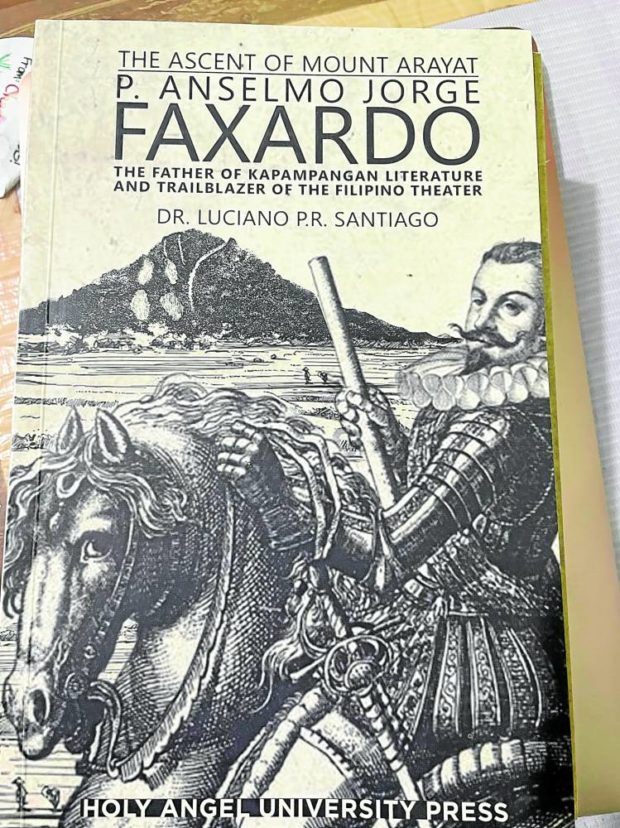In Pampanga, longest play in PH saved from oblivion
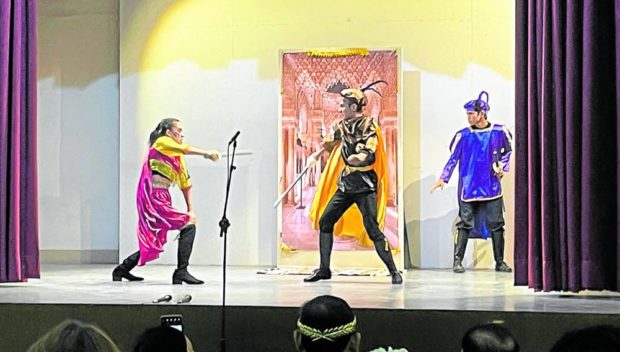
RELIVING A CLASSIC | Young artists perform excerpts from the Philippine’s longest theater play, “Comedia Heroica de la Conquista de Granada o sea Vida de Don Gonzalo de Cordoba llamado el Gran Capitan,” during the launch of its script’s reprint at the Don Honorio Ventura State University in Bacolor, Pampanga, on Jan. 21, 2023.
BACOLOR, Pampanga, Philippines — A national artist, five poet laureates, and several youth artists came together on Jan. 21 to honor a playwright priest who wrote the country’s longest theater play, which was performed almost two centuries ago.
The gathering at the Don Honorio Ventura State University (DHVSU) in this town was also in celebration of the reprinting of the play’s original script, which was first performed for seven straight nights in this town in 1831, or 192 years ago.
DHVSU and the Holy Angel University (HAU) in Angeles City published again the “comedia” (or drama in modern times) of Don Gonzalo de Cordoba written and directed by Padre Anselmo Jorge Faxardo (Fajardo), a native of Bacolor, rescuing it from oblivion.
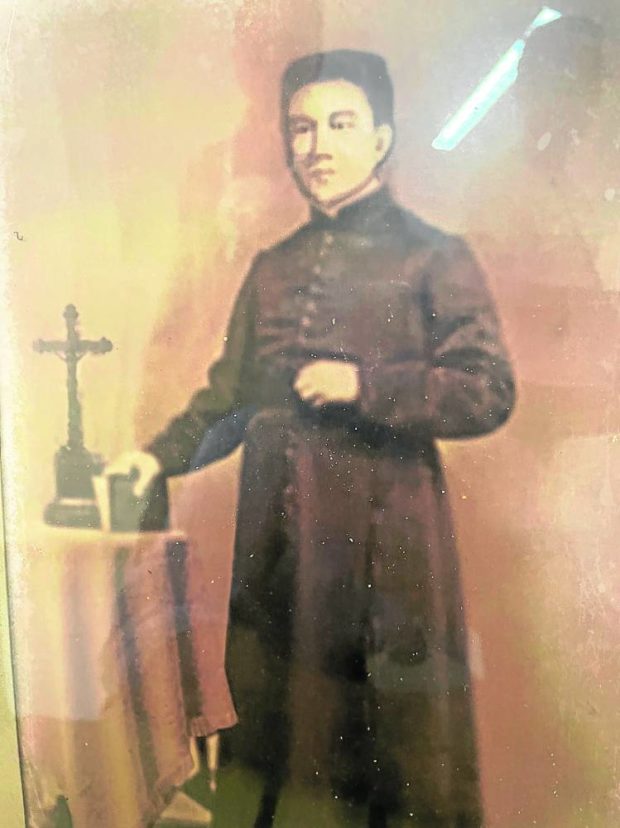
Fr. Anselmo Jorge Fajardo, who wrote and staged the play.
National Artist for Literature Virgilio Almario led the launch of the 2023 reprint, with poet laureates coming in their silver crowns of laurels.
Artists danced the Sabat Santacruzan (finding the cross) and performed excerpts from the play titled, “Comedia Heroica de la Conquista de Granada o sea Vida de Don Gonzalo de Cordoba llamado el Gran Capitan” (The Heroic Drama of the Conquest of Granada by the hero Don Gonzalo de Cordoba, the triumphant grand captain).
Article continues after this advertisementThe latest reprint contained all three volumes, which totaled 832 pages with 31,000 lines in verse form, Robby Tantingco, director of the HAU Center for Kapampangan Studies (CKS), tells the Inquirer.
Article continues after this advertisementSaving the play took many years, says Francis Musni, heritage consultant and archivist of the CKS as well as curator of the DHVSU museum.
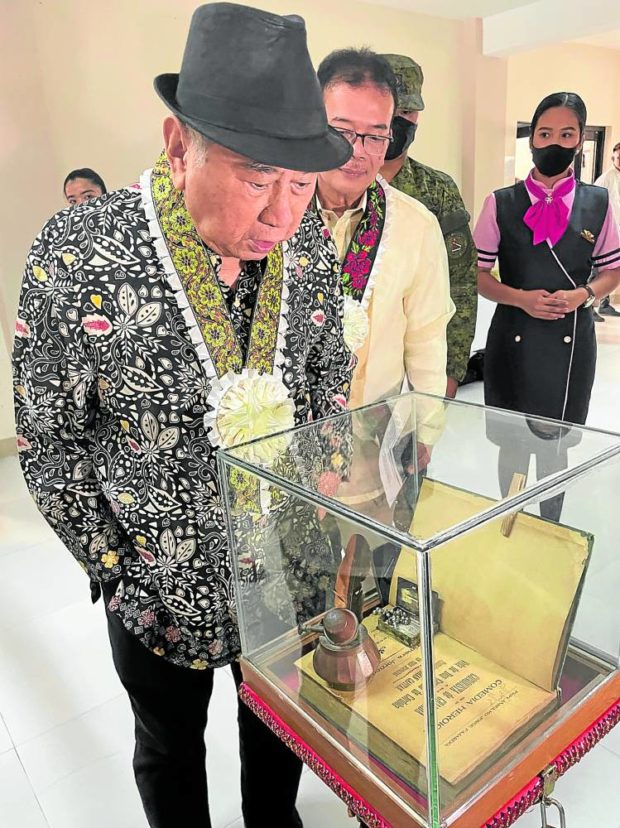
LITERARY TREASURE | National Artist for Literature Virgilio Almario views the 1912 book on the Philippines’ longest theater play performed in Pampanga in 1831. Almario led the Jan. 21 launch of the reprinted book. (Photo by TONETTE T. OREJAS / Inquirer Central Luzon)
Preserved
Musni said the text of the play was preserved when it was first published by Cornelio Pabalan Byron in 1912, or 81 years after it was staged. It was not exactly known how many copies were printed.
The late Fr. Venancio Samson, a Kapampangan lexicologist and translator of several grammar books and dictionaries by Spanish friars, found a copy of the 1912 book in 1976.
He reproduced the rare item by typing, stenciling, and binding the pages, selling the mimeographed version, also called the “Samson transcription,” to the CKS in 2010 at a price high enough to recover the reproduction cost.
Musni says the CKS has not obtained the 1912 book since Samson died in 2012.
Musni and Nestor Galura, director of the DHVSU Center for Capampañgan Culture and Arts, painstakingly typed each page of the Samson transcripts for the book form.
“I knew Fr. Samson had eagle eyes, so we trusted his transcription,” Musni recalls. “Still, I wanted to see the real thing.”
He got a glimpse of the 1912 book when CKS curator Alex Castro obtained a copy but without the cover plate.
Musni’s 20-year search ended in May 2022, when he purchased his personal copy from an antique dealer. This copy was what the DHVSU and HAU used to authenticate the Samson transcripts for the reprint of the 1912 book, he said.
Trailblazer
Dr. Luciano P. R. Santiago, who wrote on Kapampangan pioneers in the Catholic church, made sure Fajardo was remembered for his pastoral zeal and for being the “father of Kapampangan literature and trailblazer of Filipino theater.”
Before he died in 2019, Santiago managed to finish Fajardo’s biography, “The Ascent of Mount Arayat.”
The COVID-19 pandemic delayed the reprinting project by two years, Musni says.
The reprint carried a great deal of importance, asserts Almario, agreeing with Santiago that Fajardo, then delegate-elect to the Spanish legislature and a pioneer priest playwright, “paved the way for national consciousness of both women and men that would catalyze the formation not only of a national literature but also of Philippine culture in general.”
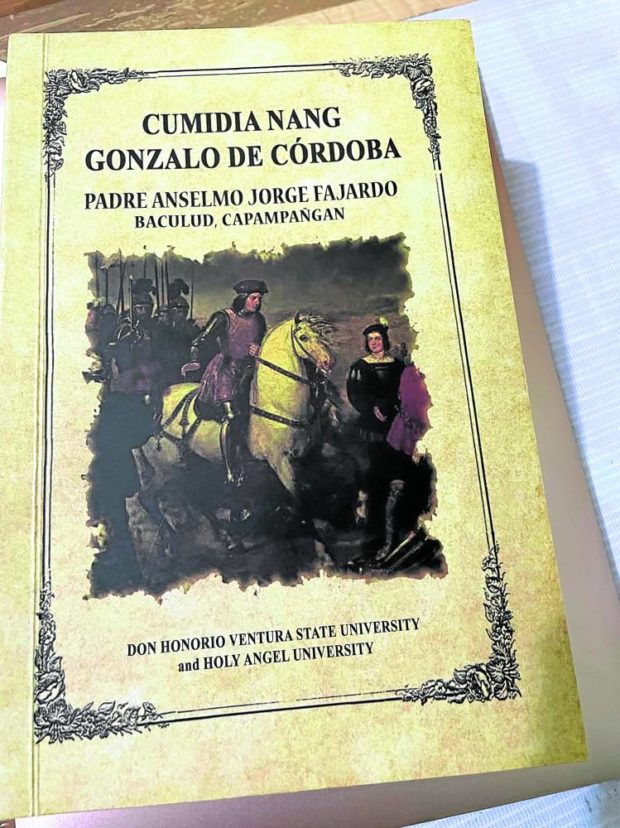
REPRINT | The reprinted 1912 book, “Cumidia nang Gonzalo de Cordoba,” ( is launched in Bacolor, Pampanga, with the companion book on the life of priest-playwright Anselmo Jorge Fajardo.
Heroism, adventure
According to Musni, the comedia was a Spanish literary form extolling the heroism and adventure of the Spanish Reconquista in their attempt to recover Granada and other parts conquered by the Muslim Turks (Moors).
“When Padre Fajardo wrote his version, he did not only translate some salient portions but he also added a love story,” Musni points out.
Studying excerpts of several episodes, scholar Edna Zapanta-Manlapaz believed the play appealed to the local audience because of its “lyrical manipulation of the Kapampangan language.”
“The richness of its vocabulary, the refinement of its rhetoric, its intricate turns of phrasing — all appealed to the ears of the Kapampangan audiences,” Manlapaz wrote, as cited by Santiago.
Because the performance was held for seven consecutive nights in February 1831, it was said that Bacolor lost many pigs and chickens because people butchered these for meals while watching.
Approved to be shown by Manila Archbishop Jose Segui (who also gave the imprimatur to the first edition of Balagtas’ “Florante at Laura”), the community in Bacolor “joined hands to build a stage, paint backdrops, sew costumes and curtains, forge wooden weapons, organize tireless rehearsals, cook food for the participants and the audience, borrow jewelry, and solicit funds from the principalia, Chinese merchants and sympathetic Spaniards in the provincial capital (Bacolor).”
The play, Santiago says, made Fajardo “one of the first three great trailblazers of the Philippine theater” alongside Tagalog bards Jose de la Cruz (Huseng Sisiw) and Francisco Balagtas.
Santiago said Fajardo’s comedia also caused ripples, with Gonzalo de Cordoba as a topic of comedia adapted in Tagalog, Ilocano, Cebuano and Bicolano.
Fajardo, it turned out later, inspired many literary heirs in and out of Bacolor.
The collaboration of DHVSU and HAU was like the phoenix rising from the ashes, in this case from the volcanic debris that buried Bacolor several times over after Mt. Pinatubo’s 1991 eruption, said Mayor Eduardo Datu.
Not more than 50,000 residents, or 35 percent of the population, have returned to the town, and the rest are dispersed in 10 resettlements in the province, he said.
